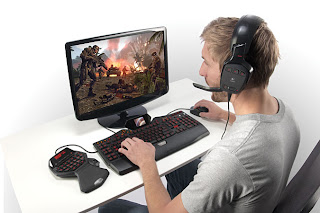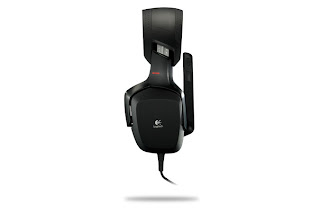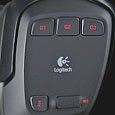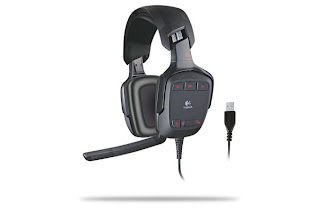 We are always seen to have away to enjoy music even personally. Logitech had introduced the G23 Surround headset for gamers.
We are always seen to have away to enjoy music even personally. Logitech had introduced the G23 Surround headset for gamers. The Logitech G35 Headset features 7.1 surround sound with built in Dolby technology that is designed to provide amazingly detailed gaming sounds with amazing sound quality.
The Logitech G35 Headset features 7.1 surround sound with built in Dolby technology that is designed to provide amazingly detailed gaming sounds with amazing sound quality. It also has 6 built in voice changing options, so you can have some fun whilst gaming. You don’t have to plug it into a jack anymore as its full USB connection available.
It also has 6 built in voice changing options, so you can have some fun whilst gaming. You don’t have to plug it into a jack anymore as its full USB connection available. The specification of the Logitech G23 Surround Headset.
The specification of the Logitech G23 Surround Headset.- 7.1 surround sound powered by Dolby® technology: Delivers a detailed soundfield—hear your enemies before they see you.
- Ear-enclosing design: Shields you from distractions and immerses you in the game.
- 40 mm laser-tuned speaker drivers with neodymium magnets: High performance components deliver crisp highs, lows, and everything in between.
- Unidirectional, noise-canceling microphone: Focuses on your voice and reduces background noise.
- Full-speed, all-digital USB connection: Delivers clean, clear audio and lets you keep your desk speakers plugged into your sound ca
- Three customizable G-keys: One-touch command over music, voice morphing, and more.
- On-ear audio controls: Quick access to volume, microphone mute, and surround sound adjustments.
- Real-time voice morphing: Select from six voices–Troll, Mutant, Alien, Giant, Cyborg, and Space Squirrel.
- Rotating mic boom with auto-mute: Microphone mutes automatically when rotated up and out of the way.
- Microphone mute light: Glows red when mic is muted.
- Cable management wrap: Don't need all 10 feet of cable? Wrap it up and keep it out of the way.
- PC with 32-bit or 64-bit Windows® XP or Windows Vista®
- 30 MB available hard drive space
- CD-ROM drive
- USB port
Technical Specifications
Headphone
- Driver: 40 mm diameter, neodymium magnet, 15 mm diameter voice coil with Ferro fluid damping
- Frequency response: 20 Hz – 20 KHz diffuse-field equalized
- Impedance: 32 ohm nominal
- Sensitivity: 90 dB SPL Ref: 1 mW, 1 KHz
Microphone
- Pickup pattern: Unidirectional (cardioid)
- Frequency response: 100 Hz – 10 KHz
- Sensitivity: -42 dBV/Pa re: 0 dB = 1 Pa, 1 KHz
- Test conditions: 3.0 V, 2.2 K ohm
Connection
- Full-Speed USB 2.0 compliant
- Cable: 10 feet/3.05 m, woven insulation
It’s a complete gaming device that ones must have even they’re novice. The Logitech is available and it cost about $ 129.90 in local stores






